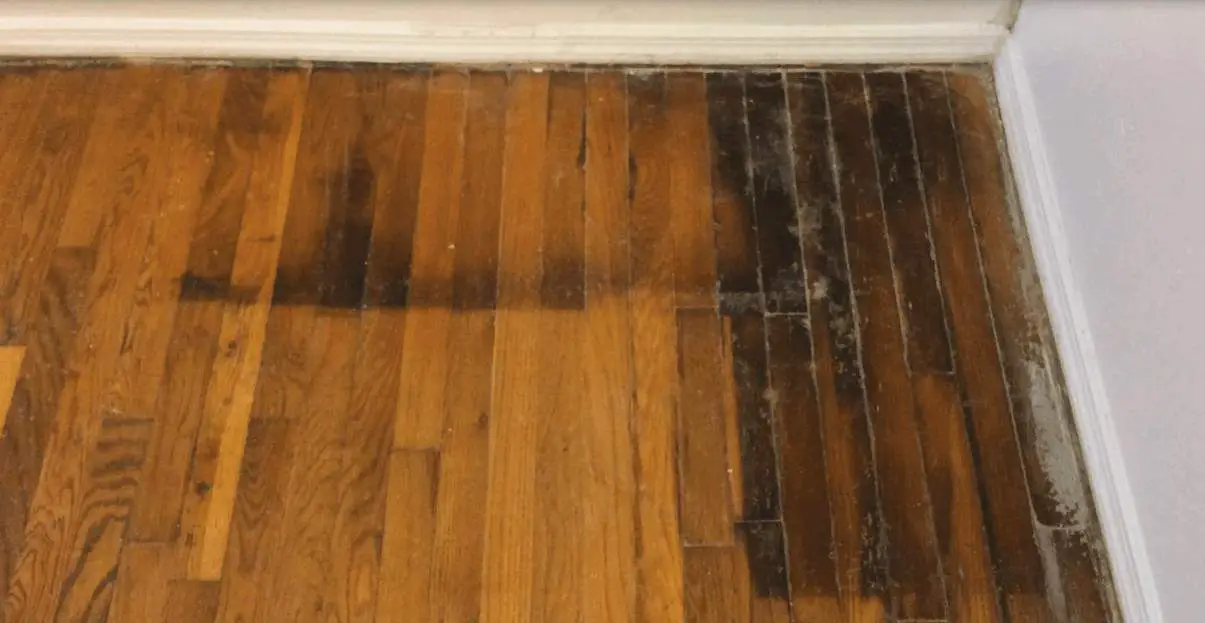Have you ever walked into your home and caught a whiff of something, well, less than pleasant? Pee stains on hardwood floors are a common problem, and they can leave an unsightly mark on your beautiful floors, as well as a lingering odor. But don’t despair, there’s hope for restoring your floors to their former glory. This guide will cover everything you need to know about tackling those pesky pee stains and getting your hardwood floors back to their pristine condition.

Image: www.pinterest.com
Cleaning pee stains out of hardwood floors can be tricky. You don’t want to use harsh chemicals that might damage the finish. However, with the right approach and a few key products, it is possible to remove the stain and restore the floor back to its original state. This guide will provide a step-by-step process for cleaning urine stains from hardwood floors, as well as some additional advice for preventing future accidents.
Understanding the Stain
The first step to removing any stain is to understand what you’re dealing with. Urine contains ammonia, uric acid, and other substances that can quickly penetrate hardwood floors, leaving a yellow or orange discoloration. The trick is to act fast, as the longer the stain sits, the deeper it penetrates, making it more difficult (but not impossible) to remove.
Types of Hardwood Floor Finishes
To effectively remove urine stains, understanding the type of finish on your hardwood floors is crucial. Here’s a breakdown of common finishes and their properties:
- Polyurethane: Most commonly used, providing a durable and protective layer. Comes in various finishes, including gloss, semi-gloss, satin, and matte.
- Oil-Based Polyurethane: Offers excellent water resistance but is slower drying than water-based polyurethanes.
- Water-Based Polyurethane: Gains popularity due to its faster drying time and low VOC (Volatile Organic Compounds) emissions.
- Lacquer: A hard and durable finish that dries quickly, but can be more susceptible to scratches.
- Wax: Offers a soft and warm sheen, but is less durable than polyurethane and may require more frequent reapplication.
Knowing the type of finish on your floors helps you choose the right cleaning products and methods, minimizing the risk of damaging the surface.
Step-by-Step Guide: Removing Pee Stains
Here’s a proven method for removing pee stains from hardwood floors:

Image: floorcarekits.com
1. Immediate Action is Key
The first 24 hours are crucial. Quickly blot up the urine using a clean cloth or paper towels. Avoid rubbing the stain, as this will spread it further. After blotting, dampen the area with cold water and blot again to remove any remaining residue.
2. Vinegar to the Rescue
White vinegar is a natural cleaning agent and disinfectant that effectively breaks down ammonia and uric acid. Mix equal parts white vinegar and water in a spray bottle. Spritz the solution onto the stain and let it sit for 15 minutes, allowing it to penetrate and break down the stain.
3. Scrubbing with Gentle Force
Using a soft-bristled brush (like an old toothbrush), gently scrub the stain in a circular motion. Avoid harsh scrubbing, as it could damage the floor’s finish. Rinse the area with cold water and blot dry. If the stain persists, repeat steps 2 and 3.
4. Baking Soda for Deodorizing
Baking soda is a natural deodorizer that can neutralize unpleasant odors. Sprinkle baking soda generously over the stained area and let it sit for 30 minutes. Vacuum up the baking soda after the allotted time.
5. Professional Help When Needed
If the urine stain stubbornly refuses to budge, especially if it’s deep-set or has been there a while, consider calling a professional cleaner. They’ll have access to specialized equipment and cleaning solutions that can tackle even the toughest stains effectively.
Additional Tips for Cleaning Urine Stains
Here are some additional tips to make your cleaning process even more effective:
- Ventilate the Area: Open windows and doors to allow fresh air in while cleaning and drying the floor. This helps dissipate any lingering odors.
- Use a HEPA Vacuum: A HEPA vacuum with a hepa filter will capture airborne particles, including pet dander and dust mites, which can harbor odors.
- Don’t Use Bleach or Harsh Cleaners: These chemicals can damage the finish of your hardwood floors, causing irreversible discoloration or etching.
- Protect Your Hands: Always wear gloves when cleaning with vinegar or other cleaning solutions to protect your skin from irritation.
Preventing Future Accidents: A Proactive Approach
Prevention is better than cure, and that rings true when it comes to urine stains on your hardwood floors. Here are some proactive steps to minimize the risk of accidents and keep your floors looking their best:
- Housebreaking Pets: If you have pets that aren’t fully housebroken, consistent training and supervised access to areas where accidents are likely to happen are crucial.
- Regular Cleaning: Mopping or vacuuming regularly helps to remove dirt and dust, creating a less inviting environment for accidents.
- Utilize Pet Pads and Litter Boxes: Provide your pets with designated areas for urination and defecation, making it easier to maintain a clean and odor-free environment.
- Supervise Children: Children may not always be aware of the impact of their actions, so supervision and encouragement for bathroom breaks are necessary.
- Promptly Clean Spills: It’s not just pet accidents; any spills should be cleaned up quickly to prevent staining.
How To Get Pee Stains Out Of Hardwood Floors
Conclusion
Removing pee stains from hardwood floors doesn’t have to be an overwhelming task. With the right tools and techniques, you can effectively remove stubborn stains and restore your floors to a clean, odor-free condition. Take action quickly, use natural solutions like white vinegar and baking soda, and don’t hesitate to seek professional help if needed. By following these tips and implementing a proactive approach, you can keep your hardwood floors looking their best, even when accidents happen.





